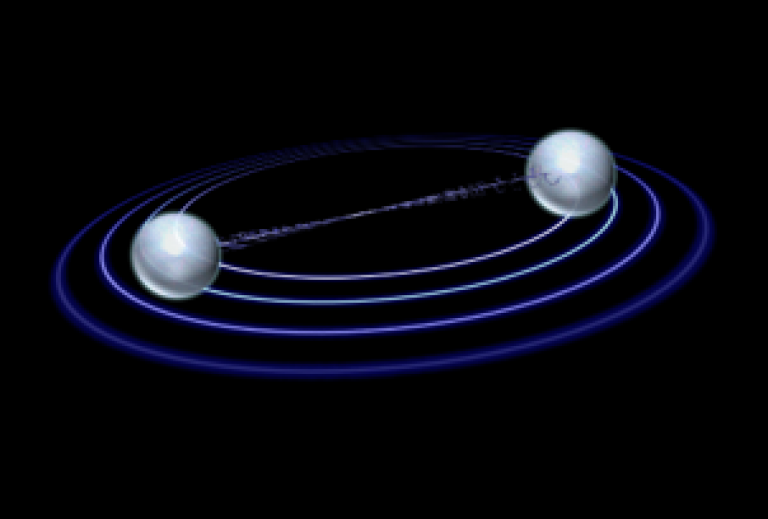Investigating hydrogenic entanglement
28 September 2020
UCLQ team first to formulate entanglement tests for hydrogen atoms.

Entanglement is a physical phenomenon that occurs when particles interact in a way such that the quantum state of each particle cannot be described independently of the state of the others, including when the particles are separated by a large distance.
Albert Einstein famous disliked the implications of quantum entanglement calling its effects “spooky action at a distance”. However, various experiments have verified the existence of the phenomenon and its effects make many quantum technologies possible.
Quantum mechanics has been studied for over hundred years and the entanglement of many systems has been considered. However, the entanglement of one of the simplest systems, the hydrogen atom, has hardly been investigated.
The study, by UCLQ researchers Sofia Qvarfort, Sougato Bose, and Alessio Serafini published today in New Journal of Physics, details the solutions to the time-independent Schrödinger equation and two entanglement tests for free and localised states for a hydrogen atom.
Corresponding author Dr Sofia Qvarfort (UCL Physics & Astronomy, UCLQ and Imperial College London), said: “When we started working on this question three years ago we were really surprised there wasn’t more literature on this topic. This is most likely due to the prevalence of approximations that largely remove the conditions necessary for entanglement.
“Asking if there is entanglement between the electron and proton in a hydrogen atom seems like a trivial question. We can see it is entangled from looking at the equations, there’s no way to write it otherwise, but proving it was really messy mathematically. I had to dig out papers from the 1920s and proofs I had never come across before.
“Throughout our work we ran into unexpected subtleties, for example the standard entanglement measures used to test for entanglement, like the von Neumann entropy, were not suitable for these systems so we had to turn to other methods and tests.”
Co-author, Professor Alessio Serafini (UCL Physics & Astronomy and UCLQ), said: “Entanglement has been proven to be advantageous for quantum information processing, quantum sensing, and as a means to test fundamental theories of nature.
“Investigating the entanglement properties of the hydrogen atom, one of only two fundamental systems we can solve analytically (the other being the simple harmonic oscillator, which has been studied in depth) is really important for our understanding of entanglement.”
The team studied the solutions to the time-independent Schrödinger equation and made use of quantum information tools to formulate two entanglement tests. The first test can be used in the case of a free hydrogen atom. In this case the wavefunction for the system is spread out across the universe. Qvarfort said: “This isn’t a very physical representation but it has really nice mathematical form.”
The second case, the team studied, considered the wavefunction for a hydrogen atom trapped inside a laboratory and what tools would be used to measure the entanglement. Qvarfort said that this test for entanglement, “might prove especially useful for experimental applications.”
Co-author, Professor Sougato Bose (UCL Physics & Astronomy and UCLQ), said: “The work has a lot of fundamental applications. Our results apply to any system that exhibits Hydrogenic structure, and we anticipate that they may be applied to study a number of systems.
“These include artificial Hydrogen atoms (formed, for example, by bound exciton systems), and positronium, which is the bound state of an electron and positron. In fact, the successful detection of electron-positron entanglement may constitute the first measurement of entanglement between matter and anti-matter systems.
The team’s approach currently centres around the assumption that the hydrogen atom is in a steady state for a long time. The next step would be to study two localised systems and ask how they would evolve into a superposition of hydrogenic states and how the entanglement would change as a function of time. The team also highlights that in future studies should consider the spin and relativistic effects in the system to develop a complete description of the entanglement of the hydrogen atom.
This work was funded by the Engineering and Physical Sciences Research council.
Links:
Contact:
Henry Bennie, UCLQ Business Development and Communications Manager
Image:
Illustration of hydrogenic entanglement. Credit: Sofia Qvarfort
 Close
Close

